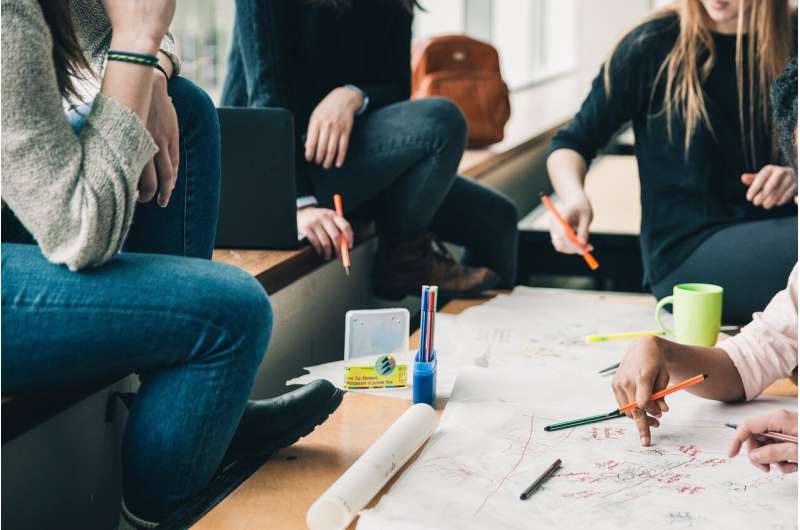Credit: CC0 Public Domain
New modern physical school spaces require open communication between stakeholders in order to be transformed into meaningful learning environments, a new study from the University of Eastern Finland shows. Pre-existing pedagogies or good practices as such cannot be transferred from one space to another.
New modern school buildings are designed to meet the needs of twenty-first century learners, aiming to facilitate, e.g., flexibility in teaching and learning, as well as collaboration and critical thinking. However, pre-existing pedagogies or good practices as such cannot be transferred from one space to another; instead, active negotiations and interaction between all stakeholders is needed.
Researchers at the University of Eastern Finland explored new teaching and learning spaces in order to gain a better understanding of the change from physical spaces to learning environments by examining how, and through which processes, learning spaces are transformed, produced and developed.
Although open and flexible physical spaces can lead to multiple positive outcomes, studies have also shown that they don't always lead to a change in pedagogy.
"A key question is whether the space is modified to meet learner needs, or whether learners are expected to adapt to the requirements of the space," Early Stage Researcher Anna Kokko from the University of Eastern Finland says.
The researchers used a comparative ethnography approach and collected observation material from two Finnish schools at different development phases. The material was supplemented by focus-group interviews with teachers and individual interviews with school principals.
"The teachers we interviewed were well aware of the potential and limitations of the physical spaces. If a physical space was seen as something static and pre-determined, it was often described as setting limitations for its use. If, however, a physical space was seen as a platform for continuous rebuilding and re-creation, it was often described as being adaptable to specific needs and pedagogically meaningful purposes," Kokko says.
According to the researchers, the results suggest that no ready-made models exist which fit into a new context. Rather, practices are constructed in physical spaces through active negotiations and meaning making. This involves cyclic processes of interaction between teachers, between students and teachers, and between students. Through these cyclic processes and with strong support from teachers, students had possibilities to find tools to build learning environments suited to their needs, which further could enable the expansion of learning environments inside and outside school walls.
Nevertheless, changes in practices required an overall change in every aspect of the school. Therefore, when using facilities such as physical spaces for the development of education, it is important that the continuous rebuilding of authentic and functional learning environments be invested in as much as the design phases. Focusing on the processes of change, results provide information from a systemic perspective on how schools can manage continuous change when developing physical spaces into learning environments.
More information: Anna Kristiina Kokko et al, From physical spaces to learning environments: processes in which physical spaces are transformed into learning environments, Learning Environments Research (2020). DOI: 10.1007/s10984-020-09315-0
Provided by University of Eastern Finland






















